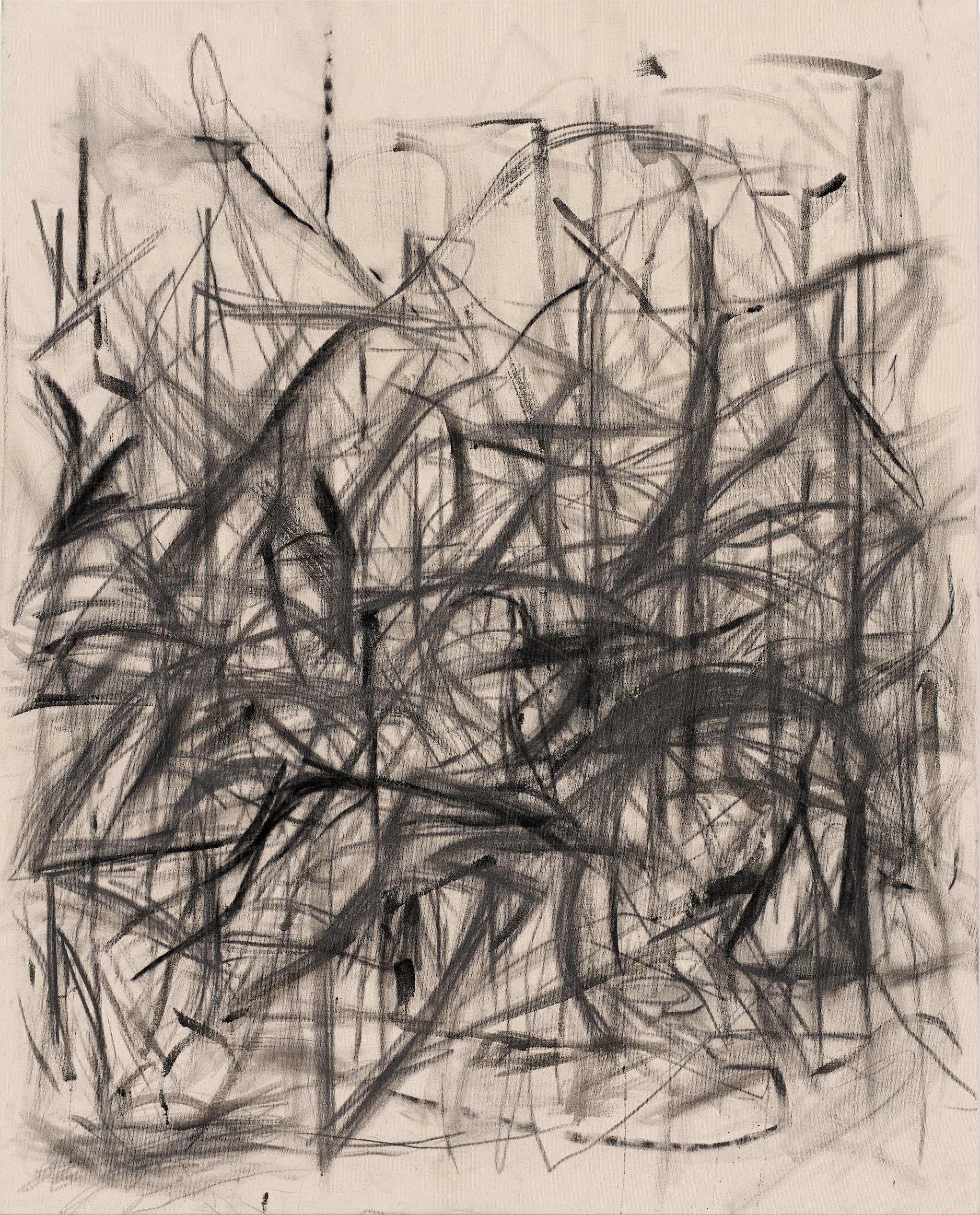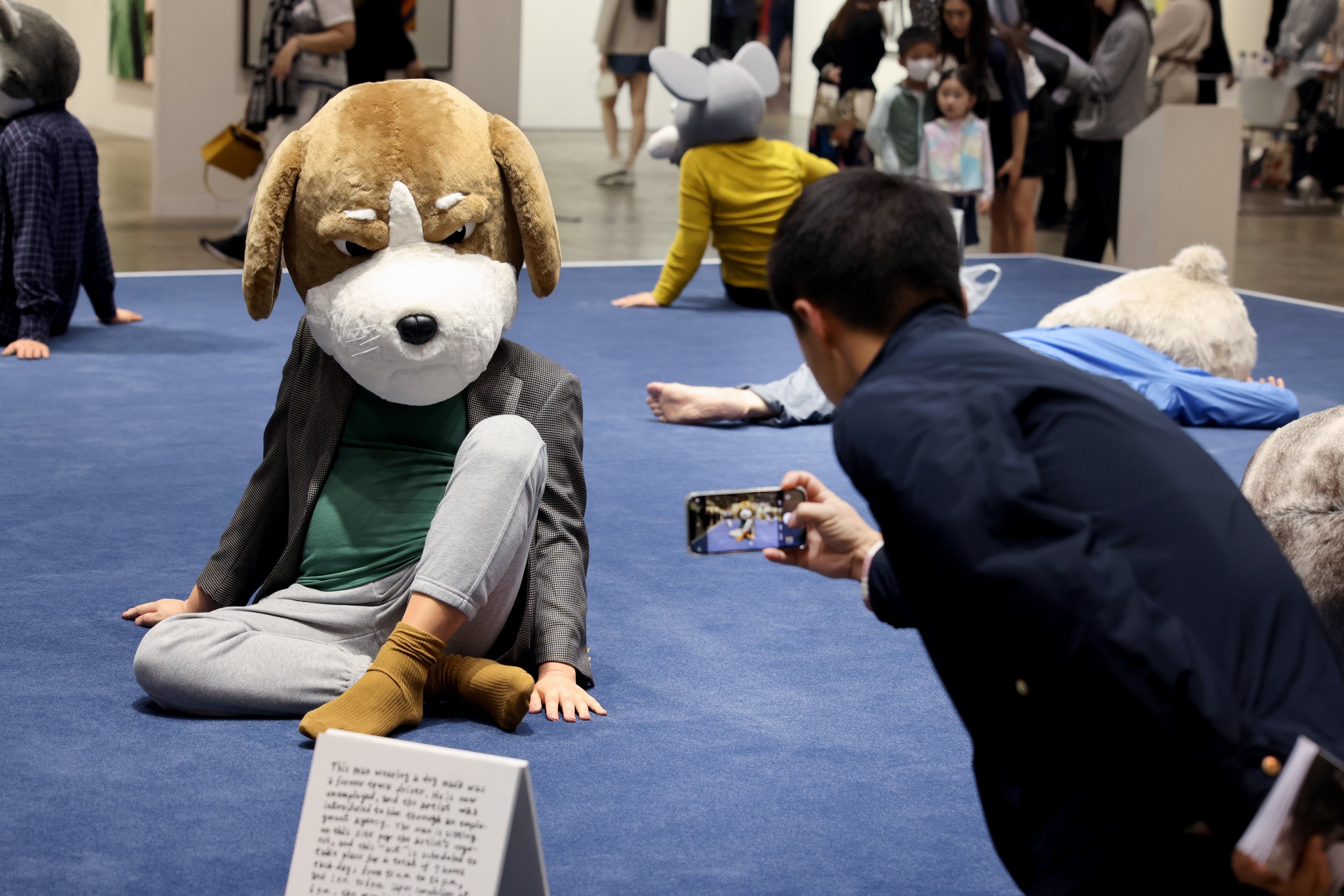Hong Kong is Back! But Will it be Able to Maintain its Position as Asia’s Leading Art Hub?
To say the past few years have been difficult for Hong Kong would be an understatement. The 2019 protests and three years of stringent COVID restrictions have significantly disrupted local businesses and any social events. Moreover, travel quarantines and political instability led to a substantial fall in tourism to the city and an exodus of locals to other countries such as Singapore and the UK.
Fortunately, life has now returned to Hong Kong and has kicked off with a month of iconic events, Art Basel, which is shortly followed by the Rugby 7s and Creamfields. This year’s edition of the fair is perfectly timed, with COVID restrictions being conveniently dropped both in Hong Kong and mainland China just before the opening.
Art Basel Hong Kong 2023. Nanzuka. Courtesy Art Basel.
Art Basel Hong Kong returned to its usual venue in the Hong Kong Convention and Exhibition Centre, spanning two floors with 177 galleries exhibiting. [1] While the fair had not recovered to its pre-COVID size of 242 exhibitors in 2019, it improved from last year’s meagre number of 130. More importantly, attendance this year was over 86,000, almost back at the 2019 high of 88,000. [2] The vast majority of visitors were from mainland China as they flooded down to Hong Kong after three years of stringent lockdowns. There were quite a few visitors from the rest of Asia, specifically from Korea, Japan, Malaysia, Thailand, and the Philippines. However, attendance from Europe and the US was noticeably lacking.
Yet, in my humble opinion, the fair was quite average. Although it had the variety in subject and media that Frieze London lacked, the general quality of works was mediocre – not bad, but not amazing either. Moreover, it was clear that many galleries, especially those based in the West, did not bring their strongest works. Perhaps bringing primarily safe works was a move to test the waters after a long hiatus.
Kazuo Shiraga, Kisan, 1991. Courtesy: Fergus McCaffrey.
Peppi Bottrop, brn bld, 2022. Courtesy: Artsy.
Walking in from Entrance D, one of the first works I encountered was Kisan (1991) by Kazuo Shiraga at Fergus McCaffrey, which sold for USD $5 million. A few random turns later, I was faced with brn bld (2022) by Peppi Bottrop at Sles + Höke. What I have always loved about Art Basel HK is its diverse selection of artists from Asia and the West, which is a mix less common at Western art fairs. This is most likely due to a difference in local collecting culture, as Asian collectors have shown consistent interest in Western blue-chip artists as well as local artists. In contrast, Western collectors are often less likely to be interested in Asian art.
This year’s fair featured predominantly Contemporary and Ultra-Contemporary artists such as Salman Toor, Alex Katz and Lee Ufan. Works by blue-chip artists such as Pablo Picasso, Auguste Renoir and Zao Wu-ki were also present. Yayoi Kusama, in particular, has maintained her status as fair queen, which is unsurprising following her controversial second collaboration with Louis Vuitton and a successful solo exhibition at the M+ Museum. One of her iconic pumpkin sculptures, Pumpkin (2022), was sold for USD $3.5mil at Ota Fine Arts, while her Sunset (1998) was seen at LGDR. [3]
Kaikai Kiki Gallery, 2023. General Impressions. Courtesy Art Basel.
The general taste in Hong Kong seems to be a mix of Western oil or acrylic and Asian oil and ink abstract works, Chinese landscapes, and kawaii art. This year collectors seemed to be the most interested in works priced $100,000 and under and Ultra-contemporary art. This may be due to the collector demographic as the number of young, passionate Asian collectors continues to grow. The obsession with hot emerging artists was apparent as galleries reported hectic buying on preview days for works from artists such as Xiyao Wang, Zhi Wei, Rachel Jones and Adam Pendleton. [4]
Lucie Chang Fine Arts, 2023. Stanley Wong. Courtesy Art Basel.
A taste of local Hong Kong culture was also seen at Lucie Chang Fine Arts, where Stanley Wong’s work using the city’s iconic red, white and blue plastic carrier bags was on display. The works ranged from calligraphic word art on Hong Kong’s resilience and fight for freedom to small-sized vase/pot-shaped sculptures. Other works I enjoyed include Untitled – Sunny Day by Liu Xiaohui, Vistor by Yi Wang I, and Home Sweet Home: Doll House 3 by MAK2. Flops included some paintings by Simon Fujiwara that were, nicely put, ‘inspired’ by Jean Michael Basquiat; Jordan Wolfson’s wall-mounted panel works that were apparently created by an AI bot, and a booth by Iv Chan in the corridor outside called Poop Me to The Moon. What even…?
Ben Brown Fine Arts. Awol Erizku, Gravity, 2018-2023. Courtesy Art Basel. Photo Isaac Lawrence.
Kukje Gallery. Gimhongsok, Solitude of Silences, 2017-2019.
Courtesy of Art Basel.
As I stressed earlier, this year’s Art Basel edition was a solid yet uninspiring return. But it was still more exciting than Frieze London which I visited back in October. Frieze London had almost exclusively paintings, predominantly by Western artists, while Basel HK had not only a more international roster of artists but more sculptures, fabric and video works, installations and even a performance piece on the second floor of the venue.
To Hong Kong, the quality of Art Basel was perhaps less important than what it signified for the city. While Hong Kong and China have been under stringent COVID restrictions over the past three years, other cities in Asia, such as Seoul and Singapore, have started attracting increasing attention as potential art hubs through the implementation of Frieze Seoul and Art SG, respectively. Furthermore, as Eastern economies have started to catch up to the West, art and collecting will garner more and more interest over time as new waves of wealthy individuals have the available income to spend on luxury goods. Therefore, it is reasonable to expect the size of regional art markets in Asia to continue growing, at least in the near future.
With this in mind, the big question for Hong Kong is whether its position as Asia’s leading art hub will be usurped by these up-and-coming cities. My answer? Probably not.
Hong Kong holds a special and very advantageous position both culturally and geographically. As a special administrative region, Hong Kong has direct access to China’s wide range of artists and, with that, its massive, extremely wealthy collector base. At the same time, its identity as a global financial capital gives it access to collectors from the West and the rest of Asia. With its Chinese roots and a Western way of business, Hong Kong is an ideal location for galleries, artists, and collectors from all over the world to connect and conduct business with peace of mind.
This was demonstrated at Art Basel, where top collectors such as Uli Sigg, Maja Hoffman, Mima Reyes, and Qiao Zhibing were gathered. Of course, the lack of value-added tax and low corporate tax is enticing for collectors and businesses operating there. Philip’s new Asia headquarters, which just opened across the road from the M+ museum, is certainly an indicator of this.
Exterior view. Hong Kong Museum of Art (HKMOA).
Additionally, Hong Kong has put in a lot of effort in the past few years to promote its artists and art collections, as seen in the new M+ and Palace museums, the Hong Kong Museum of Art (HKMOA)’s recent $400mil expansion, as well as numerous art installations in shopping malls. This has created a newfound interest in art, with artist collectables and prints becoming increasingly popular with locals. Small-sized commercial galleries such as Shout have even begun to pop up in shopping malls such as IFC selling mini Kusama pumpkins, Yoshitomo Nara prints, and works by other local emerging artists to beginner collectors and locals who may not have much knowledge of the art world.
For now, I can confidently say that apart from Hong Kong, no other city in Asia can compare to London and New York as an art hub.
Ryan Poon
Contributing Writer, MADE IN BED









